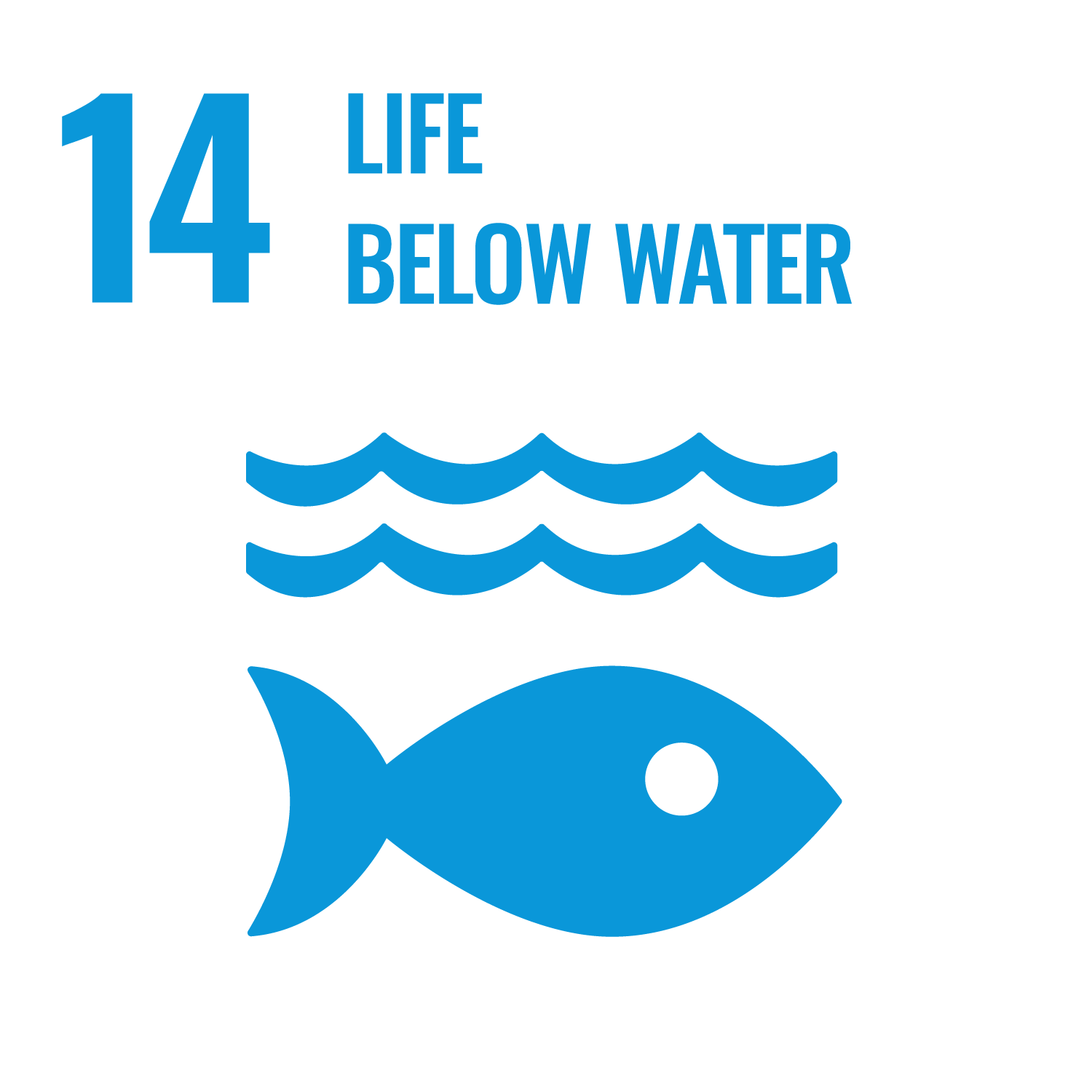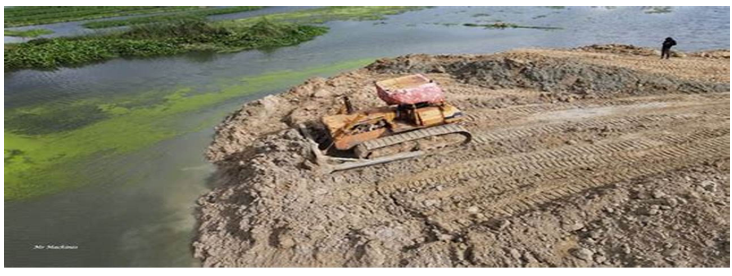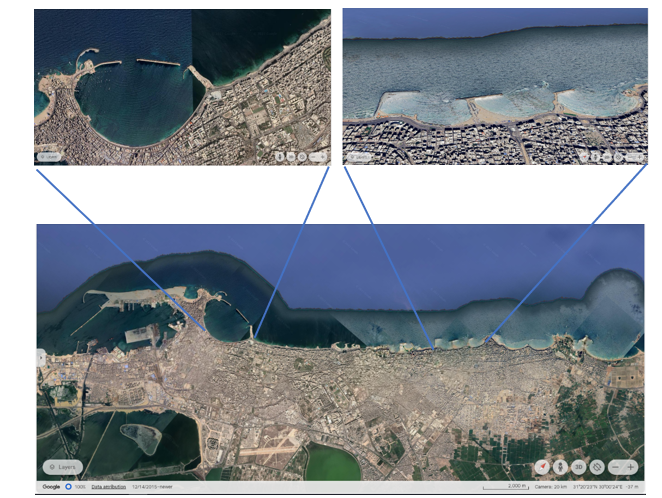 Goal 14. Life Below Water
Goal 14. Life Below Water
14.5.5 Watershed management strategy
2023-2024
- Initiative: “Existence of Harmful Algal Blooms along Alexandria Coast: A Mitigation Strategy".
Since 1998, the Alexandrian coast has undergone a series of engineering modifications. These changes have had an impact on the water quality, phytoplankton productivity, and diversity, in addition to the topography of the coast. To prevent erosion and build new beaches, preventive wave breakers were constructed in 1998. Shallow, somewhat big, semi-closed lagoons formed as a result. These lagoons become an ideal habitat for algal blooms because of their shallow depth and partial stagnation of their waters. Around 2010, the corrective strategy was subsequently implemented to lessen the negative consequences of the earlier coastal alterations. Over the course of the two periods, the phytoplankton's standing crop and composition completely changed. Internal tourism suffered financial losses due to this bloom.
A major problem along the Alexandria shoreline is beach erosion. Accordingly, the coast was subjected to coastal engineering modifications to reduce erosion and establish new recreational beaches. The coastal modifications were done without a preliminary impact assessment and led to negative effects. Semi-closed artificial lagoons were established, and a green tide was formed for the first time along these lagoons due to their shallowness and increase in nutrient concentrations. Corrective measures had to be taken to mitigate the negative effects. This study was completed at the end of 2024 ( 3-year study 2021-2024).


2022-2023
Initiative: “Existence of Harmful Algal Blooms along Alexandria Coast: A Mitigation Strategy”
Since 1998, the Alexandrian coast has undergone a series of engineering modifications. These changes have had an impact on the water quality, phytoplankton productivity, and diversity, in addition to the topography of the coast. To prevent erosion and build new beaches, preventive wave breakers were constructed in 1998. Shallow, somewhat big, semi-closed lagoons formed as a result. These lagoons become an ideal habitat for algal blooms because of their shallow depth and partial stagnation of their waters. Around 2010, the corrective strategy was subsequently implemented to lessen the negative consequences of the earlier coastal alterations. Over the course of the two periods, the phytoplankton's standing crop and composition completely changed. Internal tourism suffered financial losses due to this bloom.
A major problem along the Alexandria shoreline is beach erosion. Accordingly, the coast was subjected to coastal engineering modifications to reduce erosion and establish new recreational beaches. The coastal modifications were done without a preliminary impact assessment and led to negative effects. Semi-closed artificial lagoons were established, and a green tide was formed for the first time along these lagoons due to their shallowness and increase in nutrient concentrations. Corrective measures had to be taken to mitigate the negative effects.


